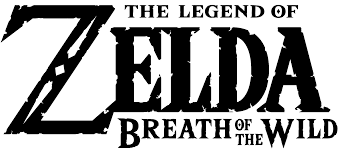Zelda, Breath of the Wild: Breathing New Life Into a Stale Genre

The Legend of Zelda, Breath of the Wild’s lush open world made me fall in love. This is the first Zelda sequel we’ve seen in 4 years, and the risks Nintendo took to make a totally hands off experience out of a traditionally linear game franchise largely pay off.
Unlike the beginnings of past Zelda games, there is no handholding. Link (your character) is dropped into a vibrant, dangerous world from the start, and the player is left to figure out what to do or not do on their own. Luckily, Nintendo has been sitting back and closely observing other successful open world games, or games that don’t require that you follow the missions in any particular order or even complete them at all. They’ve been able to design the world in a way that encourages the player to take advantage of particular mechanics.
However complicated the game may be, controls are intuitive and the mechanics fall in the same vein. In a player-friendly fashion, collectable items sparkle so they can easily seen, and easier enemies are littered around the opening area to teach players the basics of combat. The only things the player is actually required to do is complete the first 4 shrines in the Great Plateau that introduce you to the 4 “runes,” pseudo-magical powers that Link will use the rest of the game to solve puzzles and navigate the harsh environment.
The world itself is the most important character in the entire game, with rewards and surprises at every turn. Koroks, or little spirits you find by solving in-world puzzles and exploring closed off areas encourage you to inspect areas you wouldn’t have visited without them. These spirits expand Link’s weapon inventory, an important new addition considering the game’s brittle, breakable weapons.
Taking on the cartoonish art style of Zelda, Wind Waker (albeit with more detail), Breath of the Wild looks beautiful in an artistic sense, but also tells a lot about the somewhat lacking power of the Switch, nintendo’s newest console. The game sometimes slowed down or rendered character models way after they entered your line of sight, often taking away from the otherwise immersive world. These cartoony character models and textures were charming and mostly good looking, but they’re still a heavy reminder of the Switch’s relatively weak processor.
Zelda, Breath of the Wild is a masterpiece in game design, offering something for new and veteran gamers alike. The beautiful world is the game’s most charming character, and the logical rules with which the game functions encourage the player to explore and experiment. While there are some smaller performance complaints, as the Switch’s most graphically demanding game, Zelda holds up well and the rare drops in framerate should not discourage buyers from picking up the console’s blockbuster opening title.

